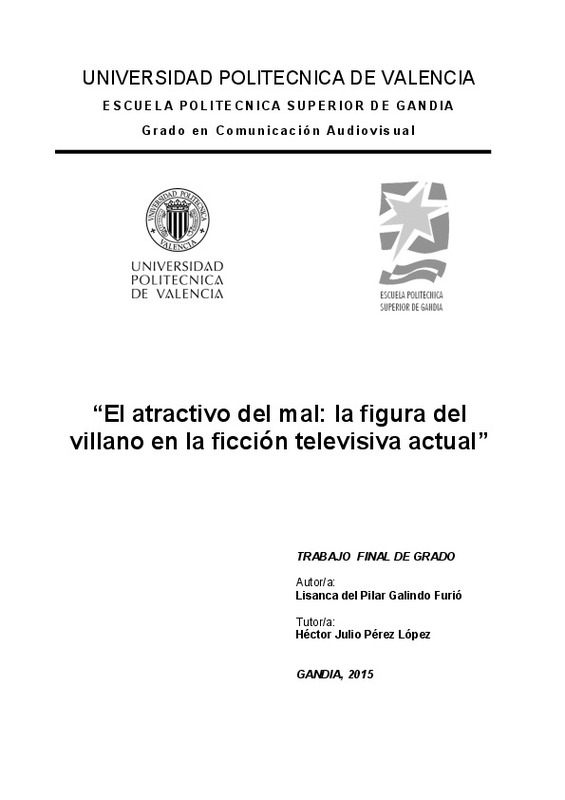JavaScript is disabled for your browser. Some features of this site may not work without it.
Buscar en RiuNet
Listar
Mi cuenta
Estadísticas
Ayuda RiuNet
Admin. UPV
El atractivo del mal: la figura del villano en la ficción televisiva actual
Mostrar el registro completo del ítem
Galindo Furió, LDP. (2015). El atractivo del mal: la figura del villano en la ficción televisiva actual. Universitat Politècnica de València. http://hdl.handle.net/10251/57397
Por favor, use este identificador para citar o enlazar este ítem: http://hdl.handle.net/10251/57397
Ficheros en el ítem
Metadatos del ítem
| Título: | El atractivo del mal: la figura del villano en la ficción televisiva actual | |||
| Autor: | Galindo Furió, Lisanca del Pilar | |||
| Director(es): | ||||
| Entidad UPV: |
|
|||
| Fecha acto/lectura: |
|
|||
| Resumen: |
La “caja tonta” ha dejado de serlo, al menos en materia de series. La ficción televisiva se ha
convertido, durante las dos últimas décadas, en un fenómeno de masas que arrastra a millones
de seguidores que consumen estos ...[+]
The TV is no longer the “idiot box”, at least when we talk about TV shows. Over the last two
decades TV fiction has become a mass phenomenon with millions of viewers consuming these
products sometimes in a crazy way. The ...[+]
|
|||
| Palabras clave: |
|
|||
| Derechos de uso: | Reserva de todos los derechos | |||
| Editorial: |
|
|||
| Titulación: |
|
|||
| Tipo: |
|
recommendations
Este ítem aparece en la(s) siguiente(s) colección(ones)
-
EPSG - Trabajos académicos [5004]
Escuela Politécnica Superior de Gandia







